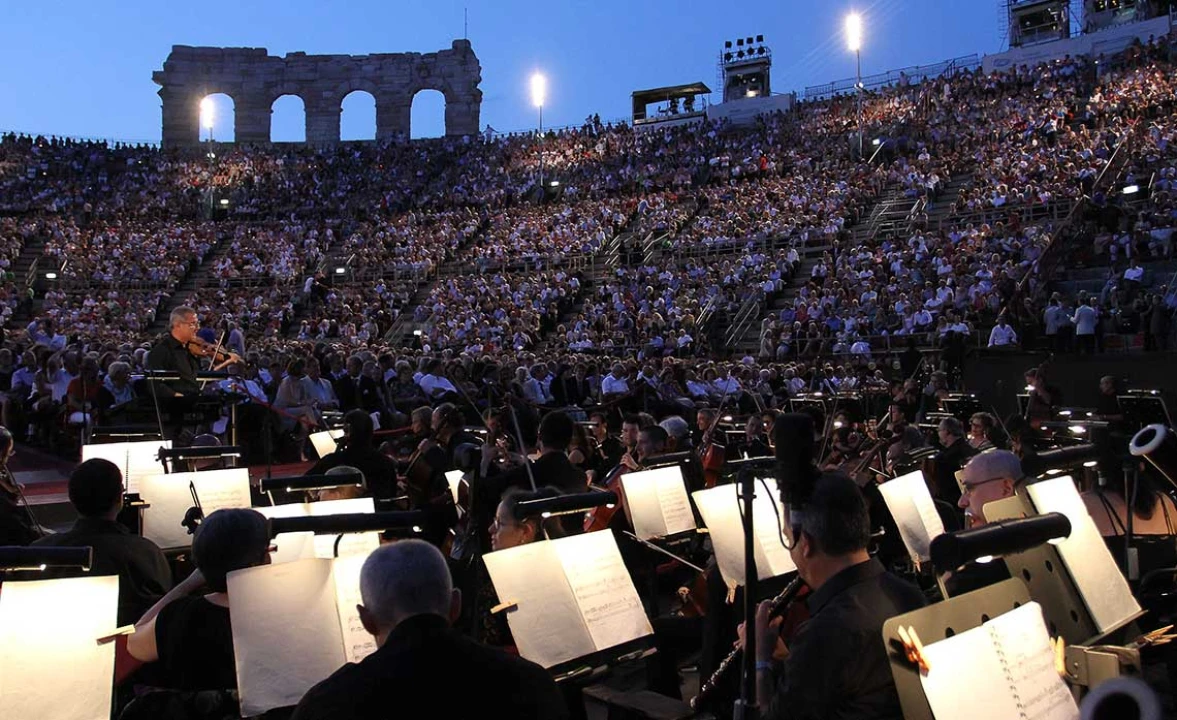As have many peoples and cultures around the world, Italy and Italians have exhibited an infinite passion for music for centuries. Italian music in particular boasts a reputation that is tightly bound to the names of important individuals, from singers to orchestra conductors and composers. In reality, the renown of music from the Bel Paese could not have been achieved without its orchestras, the official symphonic institutions that call the best Italian opera houses and concert halls their homes.
This is certainly the case for the Arena in Verona: since 1913 it has carried on a very rich musical tradition, thanks to its magnificent orchestra that also plays at the Philharmonic Theatre.
More recent is the Haydn Orchestra of Bolzano and Trento (from 1960), covering a wide range of musical genres and invitee to a number of Italian symphonic societies.
Three are the orchestral companies in Piedmont – the Turin Philharmonic Orchestra, the 1900s Philharmonic of the Teatro Regio in Turin, and the Montis Regalis Academy Foundation. The latter of the three focuses on a Baroque and Classical repertory, while the 1900s Philharmonic explores the extreme variety in music from the 20th Century, paying attention above all to new “musical languages,” such as jazz, music from film soundtracks, and popular music.
Of course, Lombardy can also boast of its own musical institutions, beginning with Milan's opera-purposed Filarmonica della Scala, founded by Claudio Abbado in 1982.
The Giuseppe Verdi Symphonic Orchestra was born one year later, and soon established itself as one of the most relevant national symphonic groups, with a repertoire that ranges from Bach and the bedrocks of 19th-Century symphonic tradition to music from the 20th Century. Finally, the Fondazione I Pomeriggi Musicali or the "Foundation for Musical Evenings" debuted in 1945. Today its home is the historic Teatro Dal Verme, but the orchestra also contributes to the Bergamo, Brescia, Como, Cremona, Mantua and Pavia Theatres' opera seasons, as well as to Teatro alla Scala's ballet performances.
It is because of names like Arturo Toscanini that Emilia Romagna's great music tradition has been so long appreciated. Indeed, the Fondazione Arturo Toscanini is this region's certified symphonic institution, and one of the most dynamic in Italy, composed of both the Arturo Toscanini Philharmonic and the Emilia Romagna Regional Orchestra. They play in the Civic Theatre of Piacenza and in the Paganini Auditorium in Parma, respectively.
Also worth mentioning is the Mozart Orchestra (directed by Claudio Abbado). The Orchestra has performed before audiences in the most famous Italian concert halls: the Accademia Nazionale di Santa Cecilia (Rome), Teatro San Carlo (Naples), Maggio Musicale Fiorentino (Florence), Teatro la Fenice (Venice), Lingotto Musica (Turin), and the Teatri of Reggio Emilia, just to name a few.
Predominating in The Marches region is the Orchestra Filarmonica Marchigiana, founded in 1985. The nationally-acclaimed Orchestra is made up of important musicians from the region who can jump from operatic to symphonic numbers with remarkable flexibility.
In Tuscany, other than the regional orchestra, the Stabile Orchestrale Fiorentina is considered among the best chamber orchestras in the country, and was begun in 1928. In 1933 the orchestra contributed to the birth of the oldest and most pretigious music festival in Europe (after that of Salzburg) the Maggio Musicale Fiorentino.
In Rome, then, the Orchestra Sinfonica holds court at the prestigious Auditorium in Via della Conciliazione, while the Orchestra del Teatro dell'Opera saw such musicians as Pietro Mascagni and Igor Stravinskij on its platform in the first years of the current century. The Accademia Nazionale di Santa Cecilia, rather, is one of the oldest musical institutions in the world, having been founded in 1585. Through the centuries the Accademia transformed itself into the most esteemed symphonic concert entity on the international stage.
In southern Italy, the Symphonic Orchestra of Bari deserves a mention; the Orchestra occupies the Teatro Petruzzelli, the quintessential site for insight into Bari's artistic, social and folkloric history.
Naples's San Carlo Orchestra originally had the honor of premiering compositions by Rossini, Bellini, Donizetti and Verdi.
And in Sicily, the Orchestra Sinfonica Siciliana, at Teatro Politeama, has been a primary point of reference in the city of Palermo since 1951.




